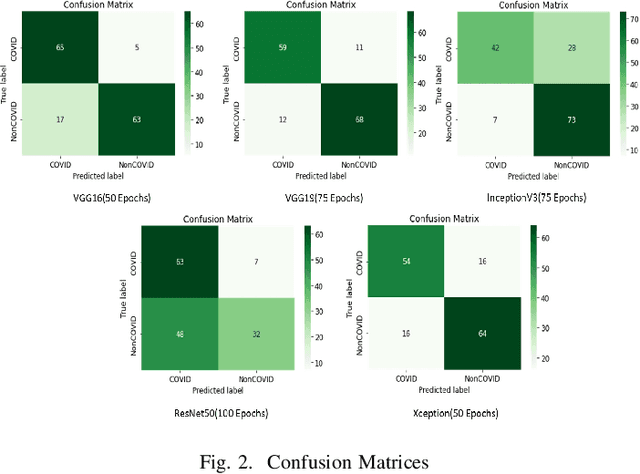Zahid Khan
Nash Equilibrium Between Consumer Electronic Devices and DoS Attacker for Distributed IoT-enabled RSE Systems
Apr 13, 2025Abstract:In electronic consumer Internet of Things (IoT), consumer electronic devices as edge devices require less computational overhead and the remote state estimation (RSE) of consumer electronic devices is always at risk of denial-of-service (DoS) attacks. Therefore, the adversarial strategy between consumer electronic devices and DoS attackers is critical. This paper focuses on the adversarial strategy between consumer electronic devices and DoS attackers in IoT-enabled RSE Systems. We first propose a remote joint estimation model for distributed measurements to effectively reduce consumer electronic device workload and minimize data leakage risks. The Kalman filter is deployed on the remote estimator, and the DoS attacks with open-loop as well as closed-loop are considered. We further introduce advanced reinforcement learning techniques, including centralized and distributed Minimax-DQN, to address high-dimensional decision-making challenges in both open-loop and closed-loop scenarios. Especially, the Q-network instead of the Q-table is used in the proposed approaches, which effectively solves the challenge of Q-learning. Moreover, the proposed distributed Minimax-DQN reduces the action space to expedite the search for Nash Equilibrium (NE). The experimental results validate that the proposed model can expeditiously restore the RSE error covariance to a stable state in the presence of DoS attacks, exhibiting notable attack robustness. The proposed centralized and distributed Minimax-DQN effectively resolves the NE in both open and closed-loop case, showcasing remarkable performance in terms of convergence. It reveals that substantial advantages in both efficiency and stability are achieved compared with the state-of-the-art methods.
Humans are Still Better than ChatGPT: Case of the IEEEXtreme Competition
May 10, 2023



Abstract:Since the release of ChatGPT, numerous studies have highlighted the remarkable performance of ChatGPT, which often rivals or even surpasses human capabilities in various tasks and domains. However, this paper presents a contrasting perspective by demonstrating an instance where human performance excels in typical tasks suited for ChatGPT, specifically in the domain of computer programming. We utilize the IEEExtreme Challenge competition as a benchmark, a prestigious, annual international programming contest encompassing a wide range of problems with different complexities. To conduct a thorough evaluation, we selected and executed a diverse set of 102 challenges, drawn from five distinct IEEExtreme editions, using three major programming languages: Python, Java, and C++. Our empirical analysis provides evidence that contrary to popular belief, human programmers maintain a competitive edge over ChatGPT in certain aspects of problem-solving within the programming context. In fact, we found that the average score obtained by ChatGPT on the set of IEEExtreme programming problems is 3.9 to 5.8 times lower than the average human score, depending on the programming language. This paper elaborates on these findings, offering critical insights into the limitations and potential areas of improvement for AI-based language models like ChatGPT.
TAU: A Framework for Video-Based Traffic Analytics Leveraging Artificial Intelligence and Unmanned Aerial Systems
Mar 01, 2023Abstract:Smart traffic engineering and intelligent transportation services are in increasing demand from governmental authorities to optimize traffic performance and thus reduce energy costs, increase the drivers' safety and comfort, ensure traffic laws enforcement, and detect traffic violations. In this paper, we address this challenge, and we leverage the use of Artificial Intelligence (AI) and Unmanned Aerial Vehicles (UAVs) to develop an AI-integrated video analytics framework, called TAU (Traffic Analysis from UAVs), for automated traffic analytics and understanding. Unlike previous works on traffic video analytics, we propose an automated object detection and tracking pipeline from video processing to advanced traffic understanding using high-resolution UAV images. TAU combines six main contributions. First, it proposes a pre-processing algorithm to adapt the high-resolution UAV image as input to the object detector without lowering the resolution. This ensures an excellent detection accuracy from high-quality features, particularly the small size of detected objects from UAV images. Second, it introduces an algorithm for recalibrating the vehicle coordinates to ensure that vehicles are uniquely identified and tracked across the multiple crops of the same frame. Third, it presents a speed calculation algorithm based on accumulating information from successive frames. Fourth, TAU counts the number of vehicles per traffic zone based on the Ray Tracing algorithm. Fifth, TAU has a fully independent algorithm for crossroad arbitration based on the data gathered from the different zones surrounding it. Sixth, TAU introduces a set of algorithms for extracting twenty-four types of insights from the raw data collected. The code is shared here: https://github.com/bilel-bj/TAU. Video demonstrations are provided here: https://youtu.be/wXJV0H7LviU and here: https://youtu.be/kGv0gmtVEbI.
* This is the final proofread version submitted to Elsevier EAAI: please see the published version at: https://doi.org/10.1016/j.engappai.2022.105095
POSTER: Diagnosis of COVID-19 through Transfer Learning Techniques on CT Scans: A Comparison of Deep Learning Models
Mar 17, 2022


Abstract:The novel coronavirus disease (COVID-19) constitutes a public health emergency globally. It is a deadly disease which has infected more than 230 million people worldwide. Therefore, early and unswerving detection of COVID-19 is necessary. Evidence of this virus is most commonly being tested by RT-PCR test. This test is not 100% reliable as it is known to give false positives and false negatives. Other methods like X-Ray images or CT scans show the detailed imaging of lungs and have been proven more reliable. This paper compares different deep learning models used to detect COVID-19 through transfer learning technique on CT scan dataset. VGG-16 outperforms all the other models achieving an accuracy of 85.33% on the dataset.
 Add to Chrome
Add to Chrome Add to Firefox
Add to Firefox Add to Edge
Add to Edge